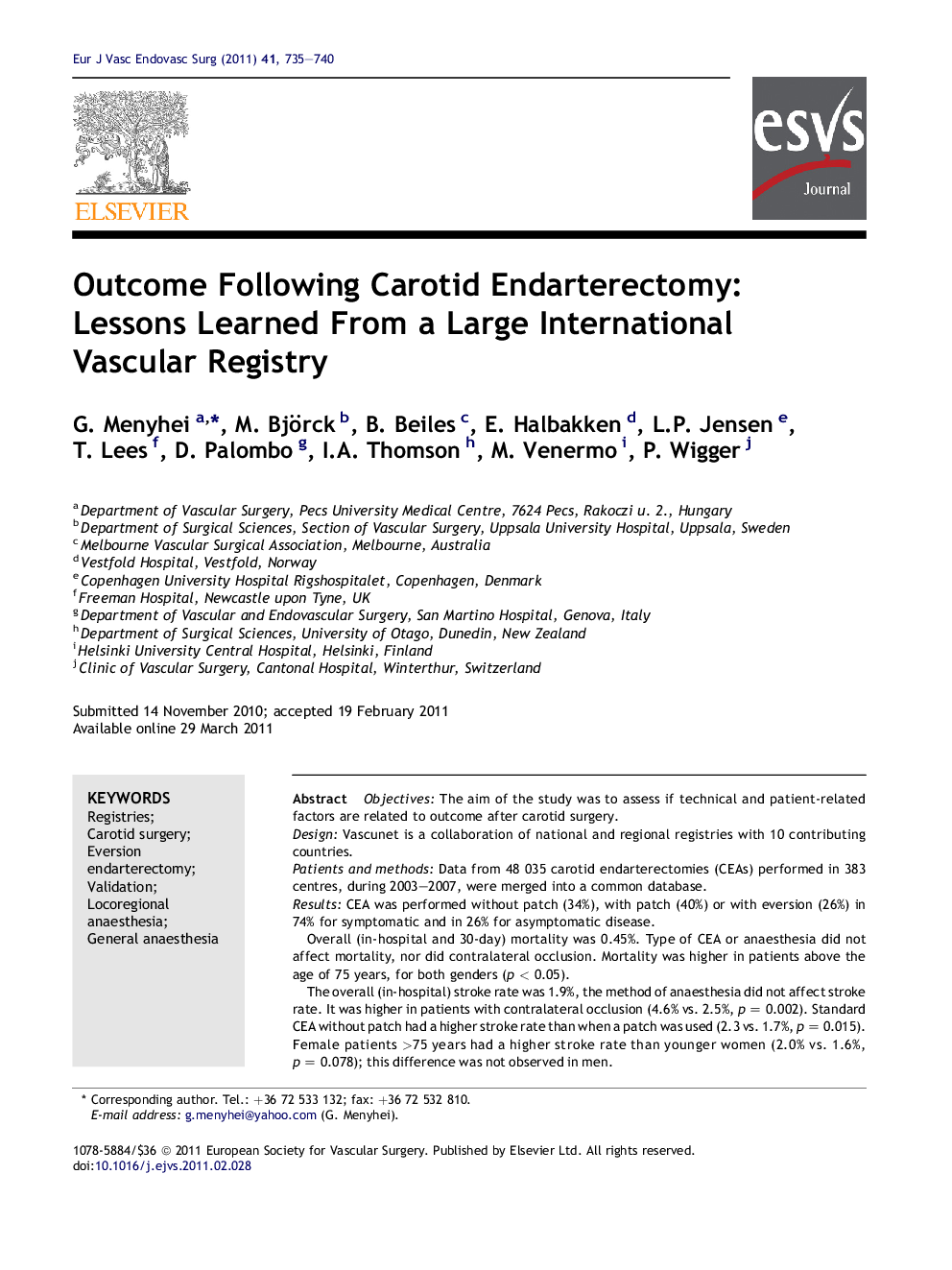| Article ID | Journal | Published Year | Pages | File Type |
|---|---|---|---|---|
| 2913314 | European Journal of Vascular and Endovascular Surgery | 2011 | 6 Pages |
ObjectivesThe aim of the study was to assess if technical and patient-related factors are related to outcome after carotid surgery.DesignVascunet is a collaboration of national and regional registries with 10 contributing countries.Patients and methodsData from 48 035 carotid endarterectomies (CEAs) performed in 383 centres, during 2003–2007, were merged into a common database.ResultsCEA was performed without patch (34%), with patch (40%) or with eversion (26%) in 74% for symptomatic and in 26% for asymptomatic disease.Overall (in-hospital and 30-day) mortality was 0.45%. Type of CEA or anaesthesia did not affect mortality, nor did contralateral occlusion. Mortality was higher in patients above the age of 75 years, for both genders (p < 0.05).The overall (in-hospital) stroke rate was 1.9%, the method of anaesthesia did not affect stroke rate. It was higher in patients with contralateral occlusion (4.6% vs. 2.5%, p = 0.002). Standard CEA without patch had a higher stroke rate than when a patch was used (2.3 vs. 1.7%, p = 0.015). Female patients >75 years had a higher stroke rate than younger women (2.0% vs. 1.6%, p = 0.078); this difference was not observed in men.ConclusionsAlthough there are limitations with registry data, the large number of cases involved provides useful information on outcomes, supplementing data from the randomised clinical trials (RCTs).
